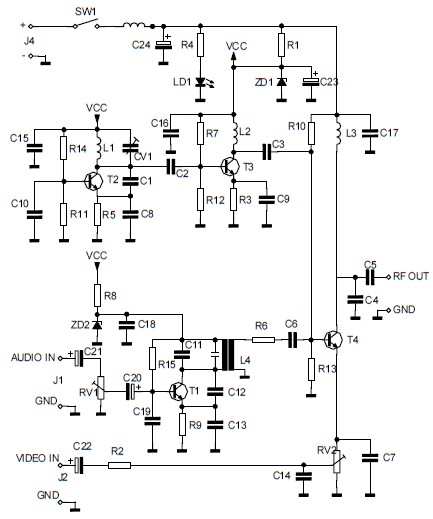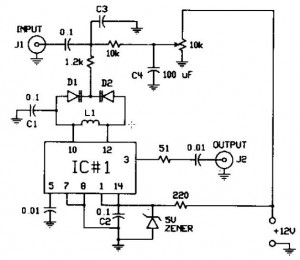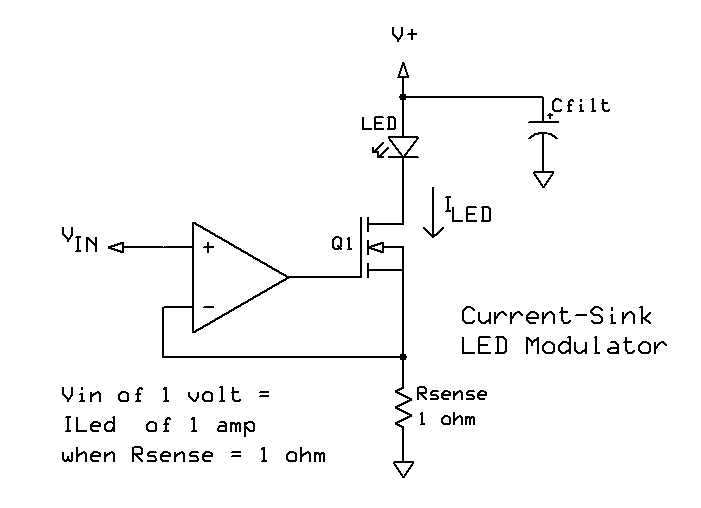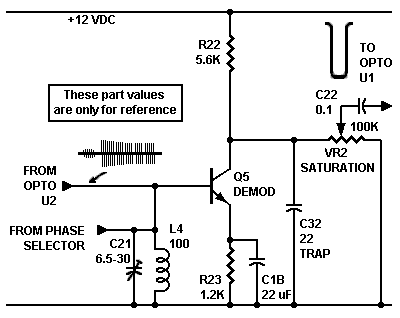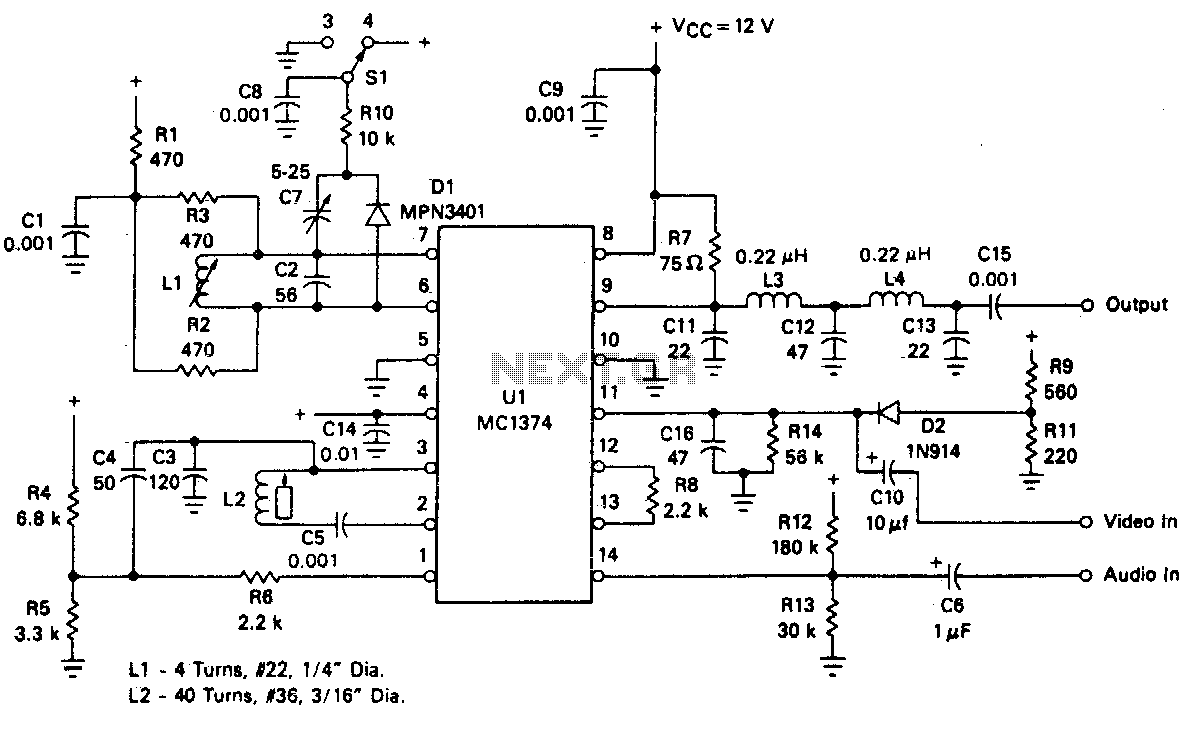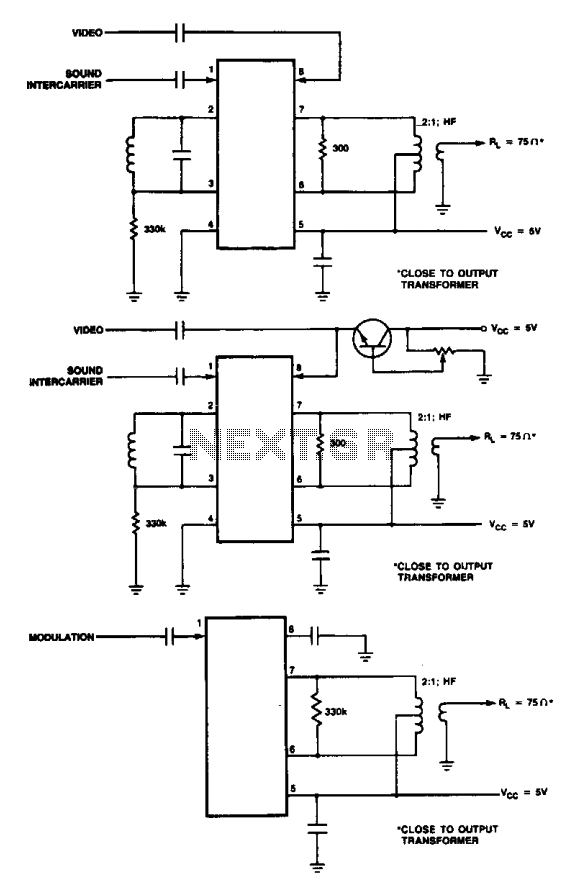
Double-Sideband Suppressed-Carrier (DSB-SC) Modulator

When a carrier signal is modulated using amplitude modulation, four frequency components are produced. The first component is the modulating signal itself, the second is the carrier frequency, while the last two are the sum and difference of the carrier and the modulating signal. These frequency components can be analyzed using a frequency analyzer. In radio transmission, the modulating frequency component is completely filtered out, as it is significantly lower than the other three frequencies. To enhance power efficiency, a double sideband suppressed carrier modulator (DSB-SC) eliminates the carrier frequency, resulting in the transmission of only the sidebands: the sum and the difference. The schematic diagram below illustrates a double-sideband suppressed-carrier modulator circuit. The output does not contain the carrier signal due to the fundamental current. The amount of carrier present at the output can be adjusted by adding offsets to the carrier differential pairs. The function of the modulation signal in AM modulation is based on amplitude.
In amplitude modulation (AM), the carrier signal's amplitude is varied in accordance with the modulating signal. This process results in the generation of sidebands that carry the information of the modulating signal. The DSB-SC technique is particularly notable as it effectively removes the carrier component, which is not necessary for the demodulation process, thereby improving power efficiency during transmission.
The modulation process can be visualized in a schematic that typically includes components such as operational amplifiers, resistors, and capacitors configured to create the desired modulation effect. The operational amplifiers serve as the primary means of manipulating the amplitude of the carrier signal based on the input from the modulating signal. The differential pairs are critical in managing the balance between the carrier and modulating signals, ensuring that the output remains clean and devoid of the carrier frequency.
The frequency analysis of the output signal can be performed using a spectrum analyzer, which will show the two sidebands and confirm the absence of the carrier frequency. This capability allows for efficient use of bandwidth and power in communication systems, making DSB-SC modulation a preferred choice in various applications, including broadcast radio and data transmission. The careful design of the circuit components and their configurations is essential for achieving the desired modulation characteristics while maintaining signal integrity.When we modulate a carrier signal with amplitude modulation, there will be four frequency components as the result. The first is the modulating signal itself, the second is the frequency carrier, the the latest two are the difference and the sum of the carrier and the modulating signal.
The spectrum of these frequencies can be seen using frequenc y analyzer. In radio transmission, the modulating frequency components is completely filtered out since the frequency is far lower than the other three. To increase the power efficiency, double sideband suppressed carrier modulator (DSB-SC) remove the carrier frequency part, so the transmitted frequencies consist only the side bands: the sum and the difference.
In the schematic diagram below, a double-sideband suppressed-carrier modulator circuit is presented. There is no carrier appear in the output because of the basic current. The Carrier amount appear in at the output can be controlled by adding offsets to the carrier differential pairs. The function of the modulation signal-AM modulation is the amplitude. 🔗 External reference
In amplitude modulation (AM), the carrier signal's amplitude is varied in accordance with the modulating signal. This process results in the generation of sidebands that carry the information of the modulating signal. The DSB-SC technique is particularly notable as it effectively removes the carrier component, which is not necessary for the demodulation process, thereby improving power efficiency during transmission.
The modulation process can be visualized in a schematic that typically includes components such as operational amplifiers, resistors, and capacitors configured to create the desired modulation effect. The operational amplifiers serve as the primary means of manipulating the amplitude of the carrier signal based on the input from the modulating signal. The differential pairs are critical in managing the balance between the carrier and modulating signals, ensuring that the output remains clean and devoid of the carrier frequency.
The frequency analysis of the output signal can be performed using a spectrum analyzer, which will show the two sidebands and confirm the absence of the carrier frequency. This capability allows for efficient use of bandwidth and power in communication systems, making DSB-SC modulation a preferred choice in various applications, including broadcast radio and data transmission. The careful design of the circuit components and their configurations is essential for achieving the desired modulation characteristics while maintaining signal integrity.When we modulate a carrier signal with amplitude modulation, there will be four frequency components as the result. The first is the modulating signal itself, the second is the frequency carrier, the the latest two are the difference and the sum of the carrier and the modulating signal.
The spectrum of these frequencies can be seen using frequenc y analyzer. In radio transmission, the modulating frequency components is completely filtered out since the frequency is far lower than the other three. To increase the power efficiency, double sideband suppressed carrier modulator (DSB-SC) remove the carrier frequency part, so the transmitted frequencies consist only the side bands: the sum and the difference.
In the schematic diagram below, a double-sideband suppressed-carrier modulator circuit is presented. There is no carrier appear in the output because of the basic current. The Carrier amount appear in at the output can be controlled by adding offsets to the carrier differential pairs. The function of the modulation signal-AM modulation is the amplitude. 🔗 External reference
